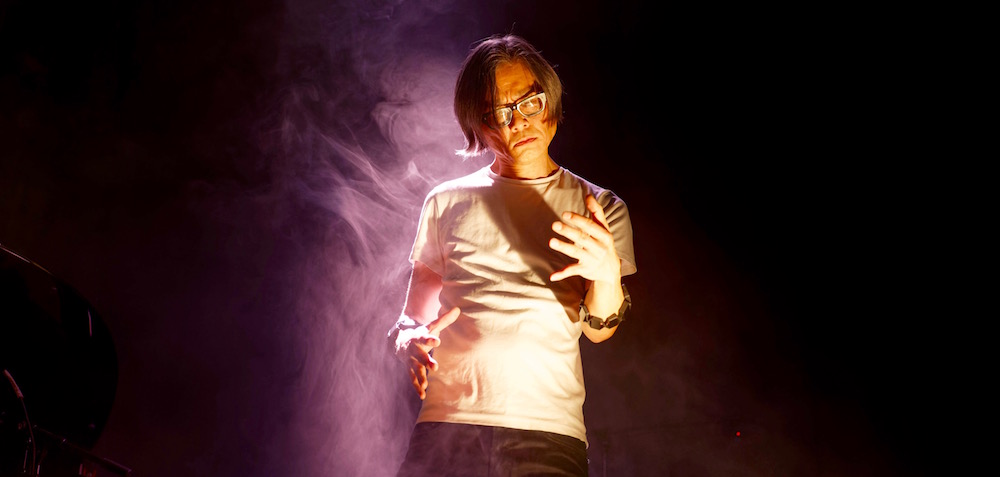This presentation includes a lecture, “Body as Instrument” and a performance of three short pieces for muscle-music interface, Le Loup, Lifting, and Myogram.
The presentation will be held at EMS on Thursday 24 May at 19.00-20.30.
Body as instrument
The talk considers the human body as musical instrument. To do so, we look at the use of physiological signals, notably the electromyogram, as a way to capture the gestural intention and effort of the performer. The use of biomedical technologies as computer interfaces, however, do not automatically comprise a musical instrument. To imagine a system that affords expressive musical performance, we will think about the notion of the “instrument”, and contrast it with concepts of the “tool” predominant in our technoculture.
Le Loup Lifting Myogram
In the performance the instrument captures electromyogram (EMG) signals reflecting muscle tension. The system renders as musical instrument the performer’s own body, allowing him to articulate sound through concentrated gesture. The sources are natural and synthetic sounds, and sounds of the body.
In Le Loup, howling wolves are stretched and sculpted. In Lifting whistling oscillators modulated. In Myogram, a direct sonification of muscle cell action potentials is heard as a stochastic pulse train reflecting limb activity and feed resonators and filters. The work is the result of the MetaGesture Music project, which was supported by the European Research Council (FP7-283771).
Atau Tanaka's first inspirations came upon meeting John Cage during his Norton Lectures and would go to on re-create Cage’s Variations VII with Matt Wand and :zoviet*france:. In the 90’s he formed Sensorband with Zbigniew Karkowski and Edwin van der Heide. His work has been presented at Ars Electronica, SFMOMA, Eyebeam, V2, NTT-ICC, and ZKM. He has worked at IRCAM, Artistic Co-Director of STEIM Amsterdam, and researcher at Sony Computer Science Laboratory (CSL). He is Professor of Media Computing at Goldsmiths, University of London.
In the performance the instrument captures electromyogram (EMG) signals reflecting muscle tension. The system renders as musical instrument the performer’s own body, allowing him to articulate sound through concentrated gesture. The sources are natural and synthetic sounds, and sounds of the body.
In Le Loup, howling wolves are stretched and sculpted. In Lifting whistling oscillators modulated. In Myogram, a direct sonification of muscle cell action potentials is heard as a stochastic pulse train reflecting limb activity and feed resonators and filters. The work is the result of the MetaGesture Music project, which was supported by the European Research Council (FP7-283771).
Atau Tanaka's first inspirations came upon meeting John Cage during his Norton Lectures and would go to on re-create Cage’s Variations VII with Matt Wand and :zoviet*france:. In the 90’s he formed Sensorband with Zbigniew Karkowski and Edwin van der Heide. His work has been presented at Ars Electronica, SFMOMA, Eyebeam, V2, NTT-ICC, and ZKM. He has worked at IRCAM, Artistic Co-Director of STEIM Amsterdam, and researcher at Sony Computer Science Laboratory (CSL). He is Professor of Media Computing at Goldsmiths, University of London.

Photo: Martin Delaney
